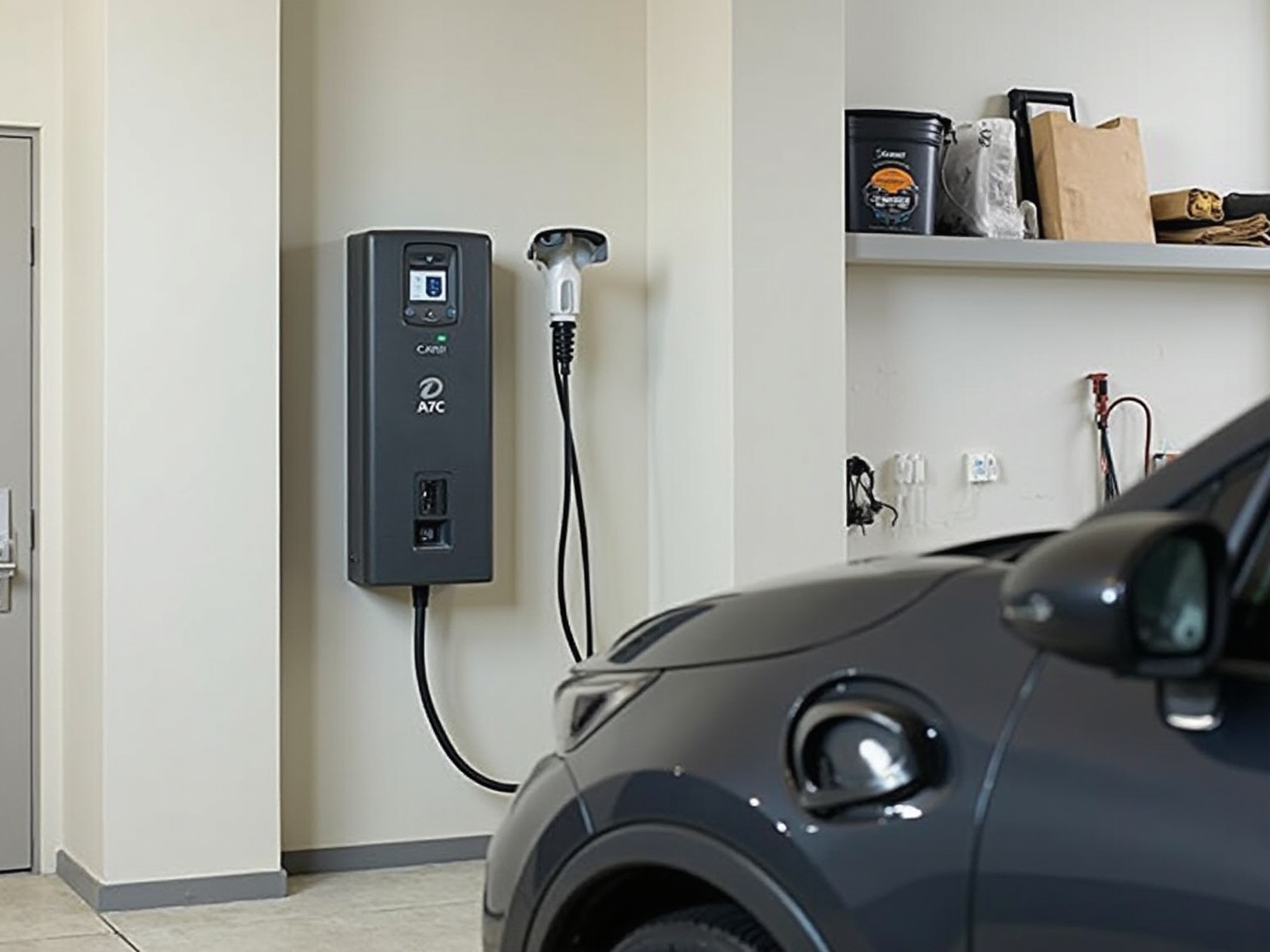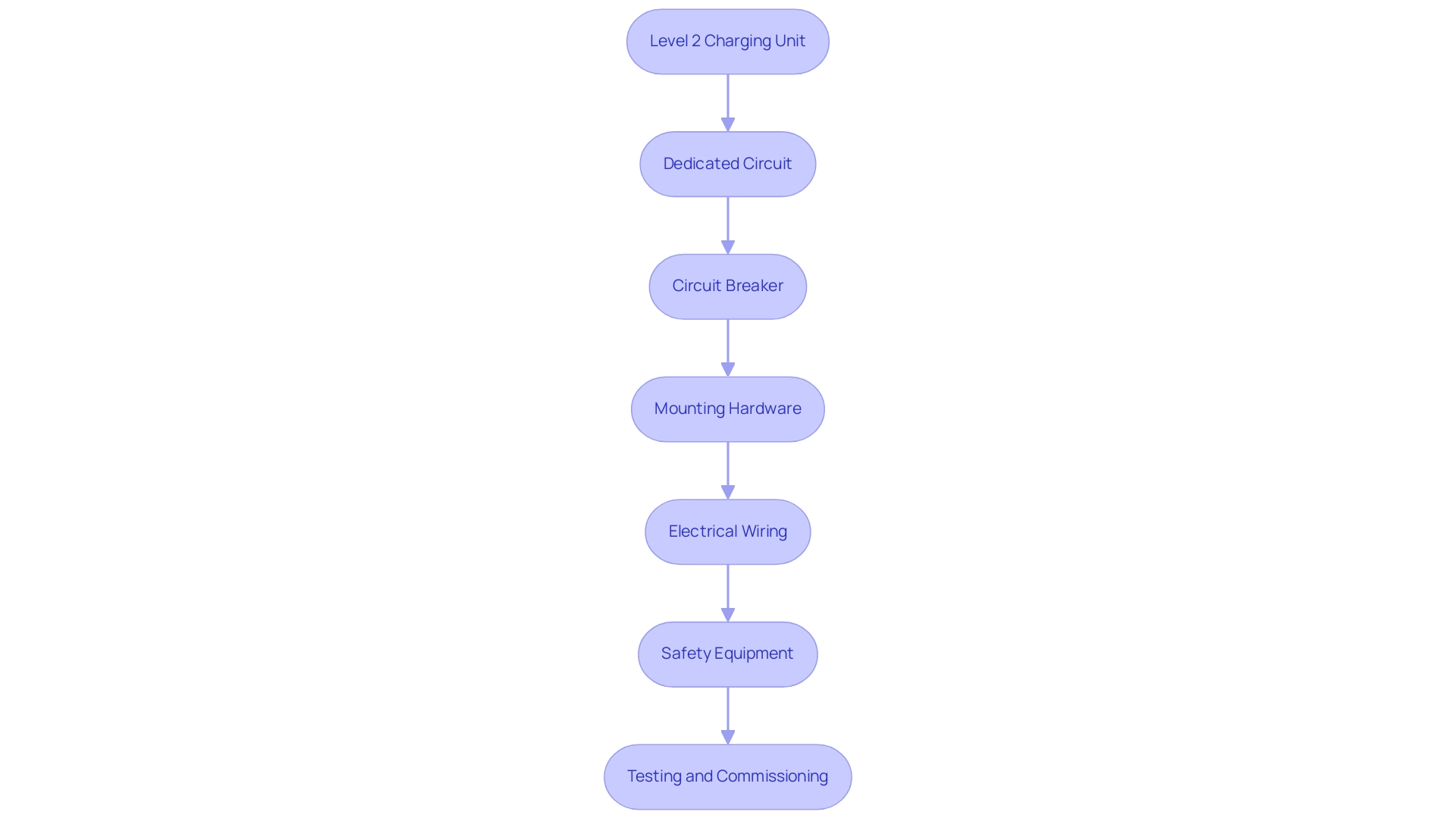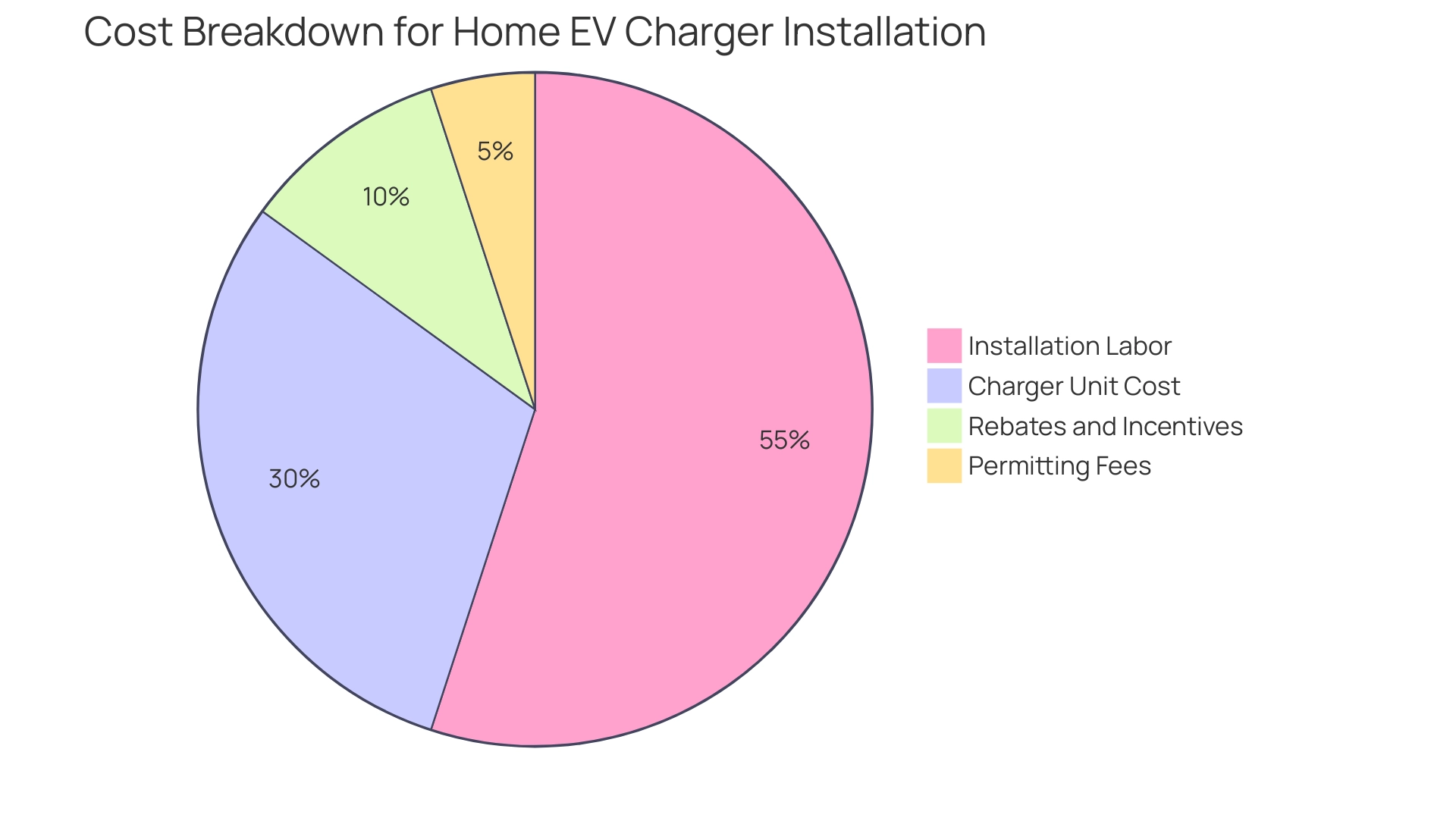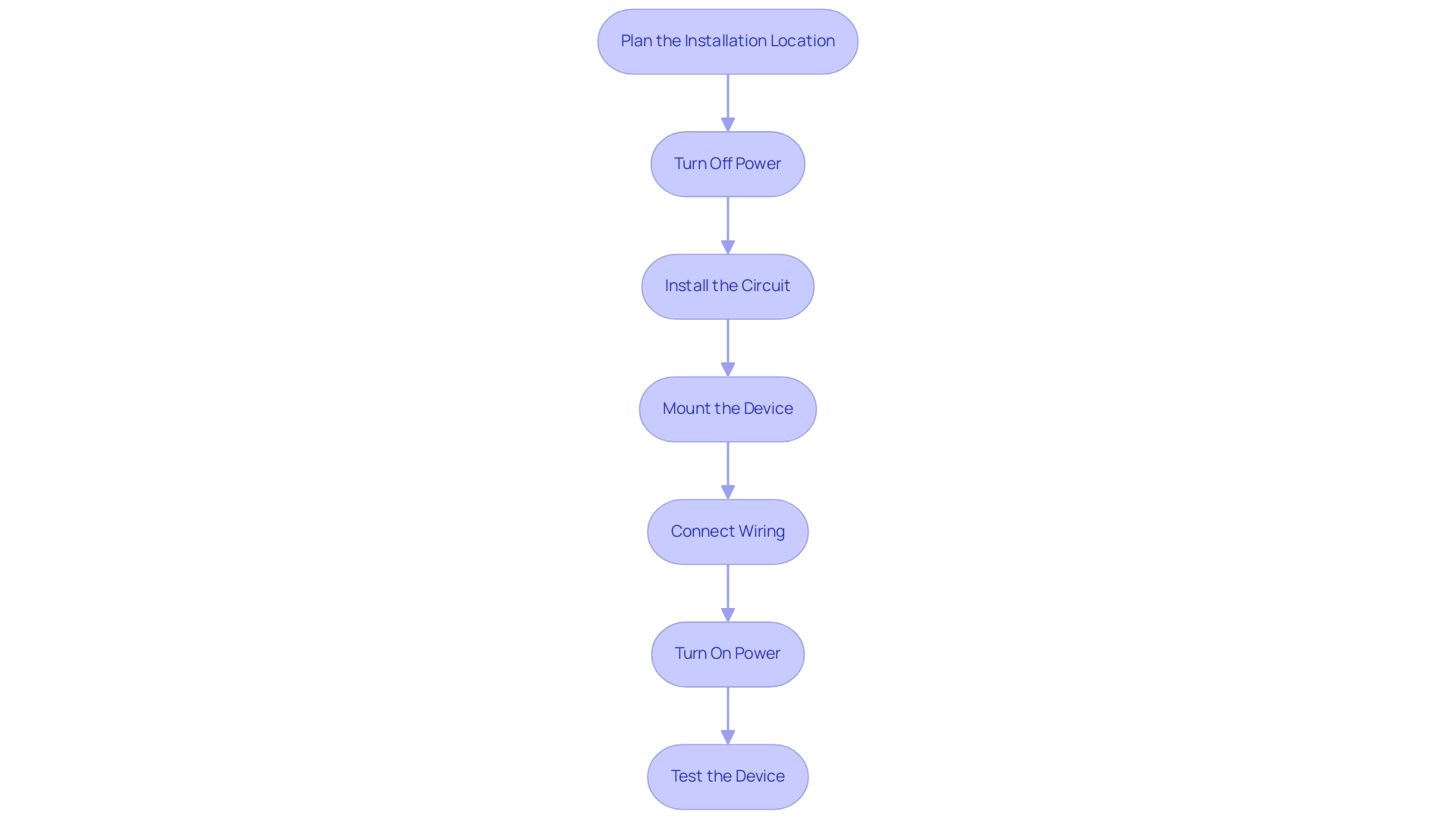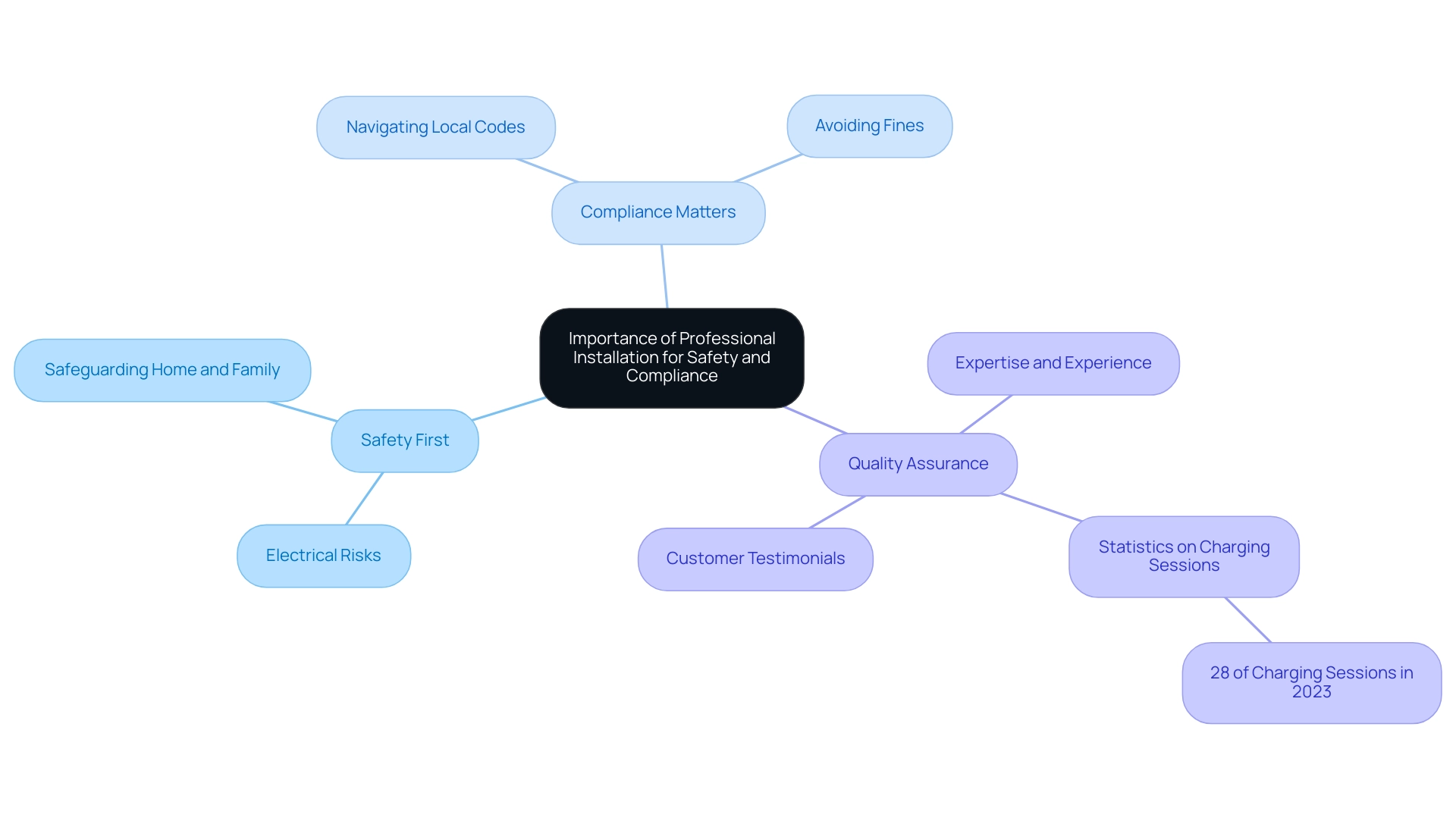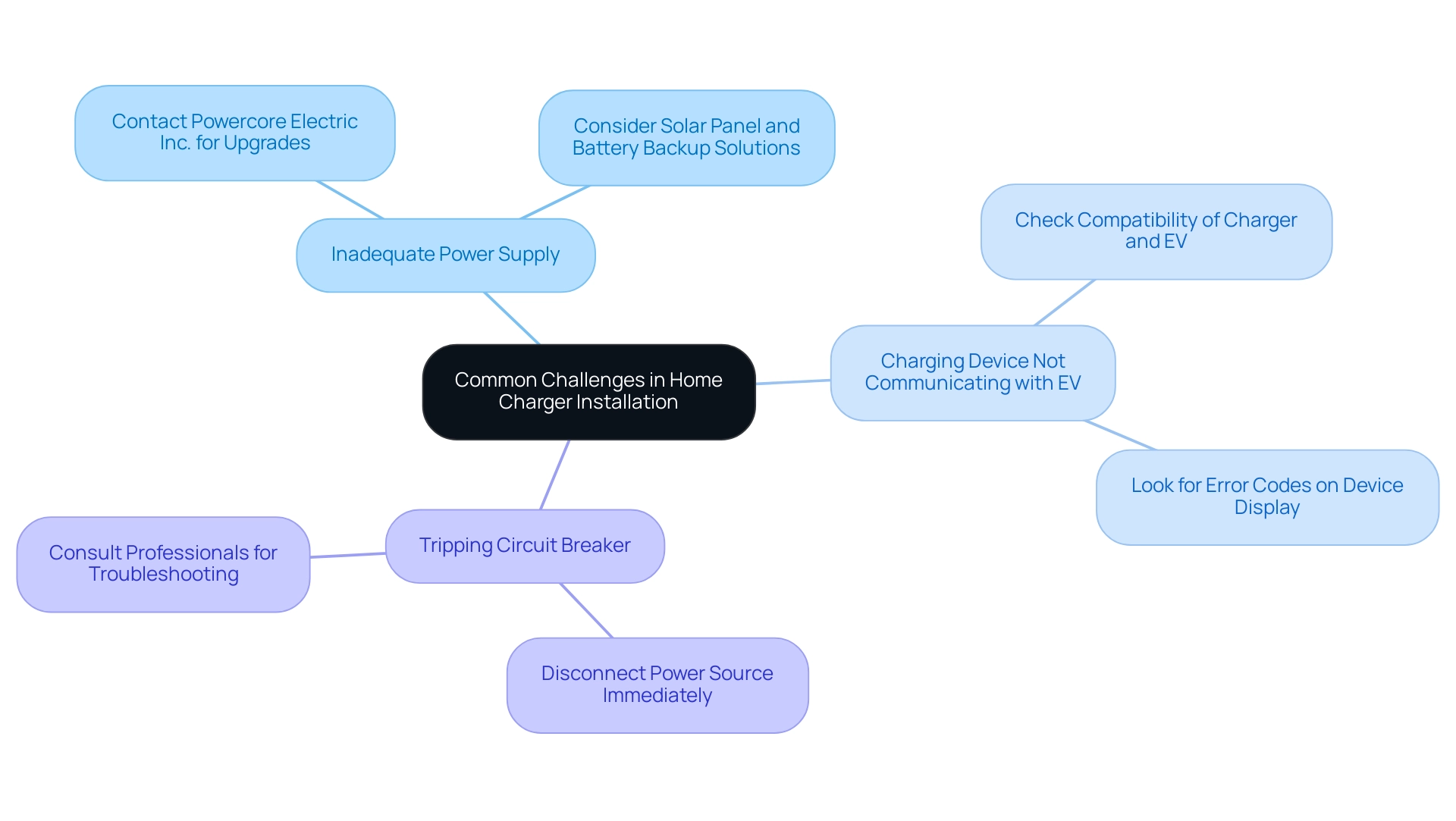Overview
Installing a Level 2 charger at home involves selecting the right charging unit, ensuring a dedicated circuit, and following a systematic installation process, which may include hiring a professional electrician for safety and compliance. The article emphasizes the importance of proper planning, safety equipment, and understanding costs, while providing a detailed step-by-step guide to facilitate a successful installation and troubleshoot common challenges.
Introduction
As electric vehicles continue to gain popularity, homeowners are increasingly considering the benefits of installing a Level 2 charger at home. This decision not only supports a greener lifestyle but also enhances the convenience of charging right from the comfort of one’s driveway.
However, embarking on this journey requires more than just enthusiasm; it involves understanding the essential components, costs, and installation processes involved. From selecting the right charger and ensuring proper electrical setups to recognizing the value of professional installation, there’s a lot to navigate.
With the right guidance, homeowners can confidently transition to this sustainable energy solution, making the most of available incentives and avoiding common pitfalls along the way.
Essential Components for Installing a Level 2 Charger at Home
Installing a level 2 charger at home can be a straightforward process when you’re equipped with the right components. Here’s what you’ll need to get started:
-
Level 2 Charging Unit: First things first, select a device compatible with your electric vehicle.
Some popular choices include ChargePoint, ClipperCreek, and Siemens.
-
Dedicated Circuit: Your Level 2 device will require a dedicated 240-volt circuit. This typically means you’ll want to call in a qualified electrician, like our team at Powercore Electric, to handle the installation safely and efficiently.
-
Circuit Breaker: It’s crucial to have the right circuit breaker in place. A common recommendation is a 40-amp breaker, ensuring your device operates safely and effectively.
-
Mounting Hardware: Depending on where you plan to install your device, you may need some sturdy brackets or anchors to securely mount it in place.
-
Electrical Wiring: Don’t skimp on quality! Make sure you use electrical wiring that complies with local codes and standards for safety and reliability.
-
Safety Equipment: Safety should always be a priority. Equip yourself with gloves and goggles when working with electrical systems to protect yourself.
-
Testing and Commissioning: After setup, it’s essential to have the system tested and commissioned to ensure everything is functioning optimally.
Our group will perform comprehensive testing before delivering the device to you.
By collecting these crucial elements in advance, you can simplify your setup process and prevent any unwanted holdups. Remember, installing a level 2 charger at home not only supports your eco-friendly lifestyle but also aligns with the recent advancements in EV infrastructure. If you require help, don’t hesitate to contact Powercore Electric for expert advice and service during the complete setup process.
Understanding Costs and Incentives for Home EV Charger Installation
When evaluating the setup for installing a level 2 charger at home, it’s crucial to recognize that expenses can differ depending on elements such as your location, the intricacy of the setup, and the kind of device you select. Homeowners can anticipate spending between $800 and $2,500 for the exterior setup required for installing a level 2 charger at home, which is a significant consideration. Here’s a detailed breakdown of what you might anticipate:
- Charger Unit Cost: A quality Level 2 charger typically ranges from $400 to $700.
- Installation Labor: The cost of employing a qualified electrician for installing a level 2 charger at home can range from $300 to $800, depending on the complexity of your setup.
- Permitting Fees: Don’t forget to check with your local municipality about any necessary permitting fees that could apply to installing a level 2 charger at home.
It’s important to note that while Level 2 units are a great choice, opting for a Level 3 option could set you back as much as $50,000 depending on location and electrical requirements, stressing the need for careful selection. Many homeowners may also be pleasantly surprised to find that there are rebates and incentives available to help reduce the financial burden of installing a level 2 charger at home. For example, in California, programs like the Clean Vehicle Rebate Project (CVRP) and various local utility incentives can significantly lessen your out-of-pocket expenses.
As mentioned by HomeAdvisor, “Yes, home electric vehicle charging devices are safe when installed and used correctly.” Staying informed about the latest offerings ensures you’re making the most of potential savings, making the transition to eco-friendly energy sources even more rewarding.
Step-by-Step Guide to Installing Your Level 2 Charger
Installing a level 2 charger at home can be a rewarding and empowering project, especially for eco-conscious homeowners looking to embrace sustainable energy solutions. Here’s a friendly, step-by-step guide to help you through the installation process:
- Plan the Installation Location: Start by identifying a spot that’s convenient for your vehicle, ideally close to where you park and with easy access to your electrical panel.
- Turn Off Power: Safety first! Before diving into any electrical work, make sure to turn off the power at your circuit breaker to avoid any accidents.
- Install the Circuit: If your setup requires it, consider hiring a licensed electrician to run a dedicated 240-volt circuit from your electrical panel to the charging location. This step is crucial for ensuring your device operates effectively and safely. As you embark on this journey, also think about how solar batteries can complement your charging needs, as they provide a sustainable energy source that can enhance your home charging experience. When selecting a solar battery, consider factors such as capacity, lifespan, efficiency, and cost to make an informed decision that aligns with your energy needs.
- Mount the Device: Use the mounting hardware included with your device to securely attach it to a wall or post. Be sure to choose a height that makes it easy to reach.
- Connect Wiring: Follow the manufacturer’s instructions carefully to connect the wiring from the power supply to your dedicated circuit. Depending on your comfort level with electrical work, you might want to enlist a professional here to ensure everything is up to code. As mentioned by Landers Electric, “The aim of this article is to assist you in comprehending not only what to anticipate in the electric vehicle charging setup process, but also how to select the appropriate installer for your electric vehicle charging device.”
- Turn On Power: After all connections are made, it’s time to turn the power back on at your circuit breaker.
- Test the Device: Finally, plug in your electric vehicle and check to see if the equipment is functioning correctly. Look out for any error messages or anomalies.
By following these straightforward steps, you’ll be well on your way to enjoying the convenience that comes from installing a level 2 charger at home. Additionally, consider the levelized cost of charging EVs, available incentives, and how investing in solar batteries can further support your sustainable transition. Remember, if you ever feel uncertain, don’t hesitate to contact an expert like those from Qmerit, who have a strong history in EV equipment setups, having completed over 450,000 placements with an emphasis on customer satisfaction.
Ready to make the switch to electric vehicles? Reach out to our team today to discover more about our EV charging options and how we can assist you in adopting a cleaner, more sustainable future.
The Importance of Professional Installation for Safety and Compliance
While the idea of installing a Level 2 charger may appeal to some DIY enthusiasts, opting for professional installation from Powercore Electric brings a wealth of benefits that can’t be overlooked. Here’s why hiring an expert is the smart choice:
- Safety First: Electrical work can pose significant risks, and a licensed professional from Powercore ensures that every connection is made safely and in accordance with best practices. This is not just about following instructions; it’s about safeguarding your home and family, allowing you to enjoy your sustainable energy solutions with confidence.
- Compliance Matters: Navigating local building codes and regulations can be tricky, but our qualified electricians are well-versed in these requirements. This means you won’t have to worry about potential fines or issues when it comes time to sell your home—our commitment to exceptional service ensures peace of mind.
- Quality Assurance: Our professionals bring a wealth of experience and expertise to the table, enabling them to spot potential problems that a DIY installer might miss. For example, dependable setups are essential, as shown by recent data indicating that workplace charging sessions represented 28% of all charging sessions on the ChargePoint network in 2023. This statistic highlights the significance of having reliable setups, which expert setup assists in guaranteeing.
Customer testimonials further emphasize this: “Ryan and his team were great. They were fast, efficient, and stayed on schedule for our solar installation. I have recommended the company to some friends, and they were also pleased with their service. I’d certainly suggest Ryan and the electrical company.”
By investing in expert setup with a professional service, you not only ensure that your charger is configured properly but also gain peace of mind, knowing that you’ve reduced the risk of electrical dangers. As Omar Vargas, head of public policy at General Motors, emphasizes,
“We’re helping that kind of planning, and we’re pretty confident that in the next couple of years, we’re going to have a vigorous EV charging network in the United States.”
A robust EV charging network emphasizes the necessity for safe and compliant practices, including installing a level 2 charger at home, as these contribute to the overall reliability of the charging infrastructure.
Moreover, with proactive solutions provided by local specialists, your investment in professional setup not only boosts your home’s safety but also its market attractiveness, making it a wise option for eco-conscious homeowners. Our services include electrical estimates, home safety inspections, and expert troubleshooting to ensure your installation is seamless and meets all your needs.
Common Challenges and Troubleshooting Tips for Home Charger Installation
When installing your Level 2 EV charger, you might run into a few hurdles, but don’t worry—here are some friendly tips to help you tackle these challenges:
- Inadequate Power Supply: If your home’s electrical system isn’t quite up to the task, consider reaching out to the experts at Powercore Electric Inc. They can assist you in upgrading your electrical panel or adding a dedicated circuit to accommodate your new device. Additionally, their solar panel and battery backup solutions can enhance your overall energy efficiency, making it easier to power your electric vehicle. With the installation of nearly 5,000 km of electric road systems (ERS) by 2030 in France, the demand for home charging stations is on the rise, making it essential to have a robust electrical setup.
- Charging Device Not Communicating with EV: Ensure that your charging device is properly connected and that your electric vehicle is compatible with the model you’ve chosen. If you notice any error codes on the device’s display, those are your clues for what might be going wrong. As Asensio noted, “People are getting frustrated because they don’t feel like they’re getting their money’s worth,” highlighting the importance of ensuring your setup is functioning correctly to avoid unnecessary dissatisfaction. The company has successfully addressed similar issues for numerous clients, ensuring their installations are seamless and effective.
- Tripping Circuit Breaker: If the circuit trips every time you connect your device, this could indicate an overload or possibly a wiring issue. Disconnect the power source promptly and consult a professional, like those at Powercore Electric Inc., to ensure everything is safe. Their team is well-versed in troubleshooting these types of problems and can provide detailed assessments and solutions. Additionally, the case study on opaque pricing models for EV charging reveals that unregulated pricing can lead to confusion and dissatisfaction among users, similar to the issues you might encounter if your setup isn’t handled correctly.
By keeping these common challenges in mind and having some handy troubleshooting tips, you can make installing a level 2 charger at home smoother and start enjoying the benefits of your new charger in no time! For any assistance, feel free to contact Powercore Electric Inc. at ryan.serrano@powercoreinc.net or call (916) 699-8778.
Conclusion
Investing in a Level 2 charger for electric vehicles at home is a significant step towards a more sustainable and convenient lifestyle. By understanding the essential components needed for installation, such as:
- The charger unit
- Dedicated circuit
- Safety equipment
homeowners can prepare effectively for this transition. The importance of professional installation cannot be overstated; it ensures safety, compliance with local codes, and peace of mind, allowing for a reliable and efficient charging experience.
Understanding the costs associated with installation, including potential rebates and incentives, helps homeowners make informed financial decisions. While the initial investment may seem daunting, the long-term benefits of convenience, reduced electricity costs, and environmental impact make it a worthwhile endeavor.
With a solid plan and the right support, from selecting the ideal location to troubleshooting common challenges, the journey to home EV charging can be both rewarding and empowering. Embracing this technology not only enhances personal convenience but also contributes to a greener future. As the electric vehicle landscape continues to evolve, taking these steps can position homeowners at the forefront of sustainable living.


